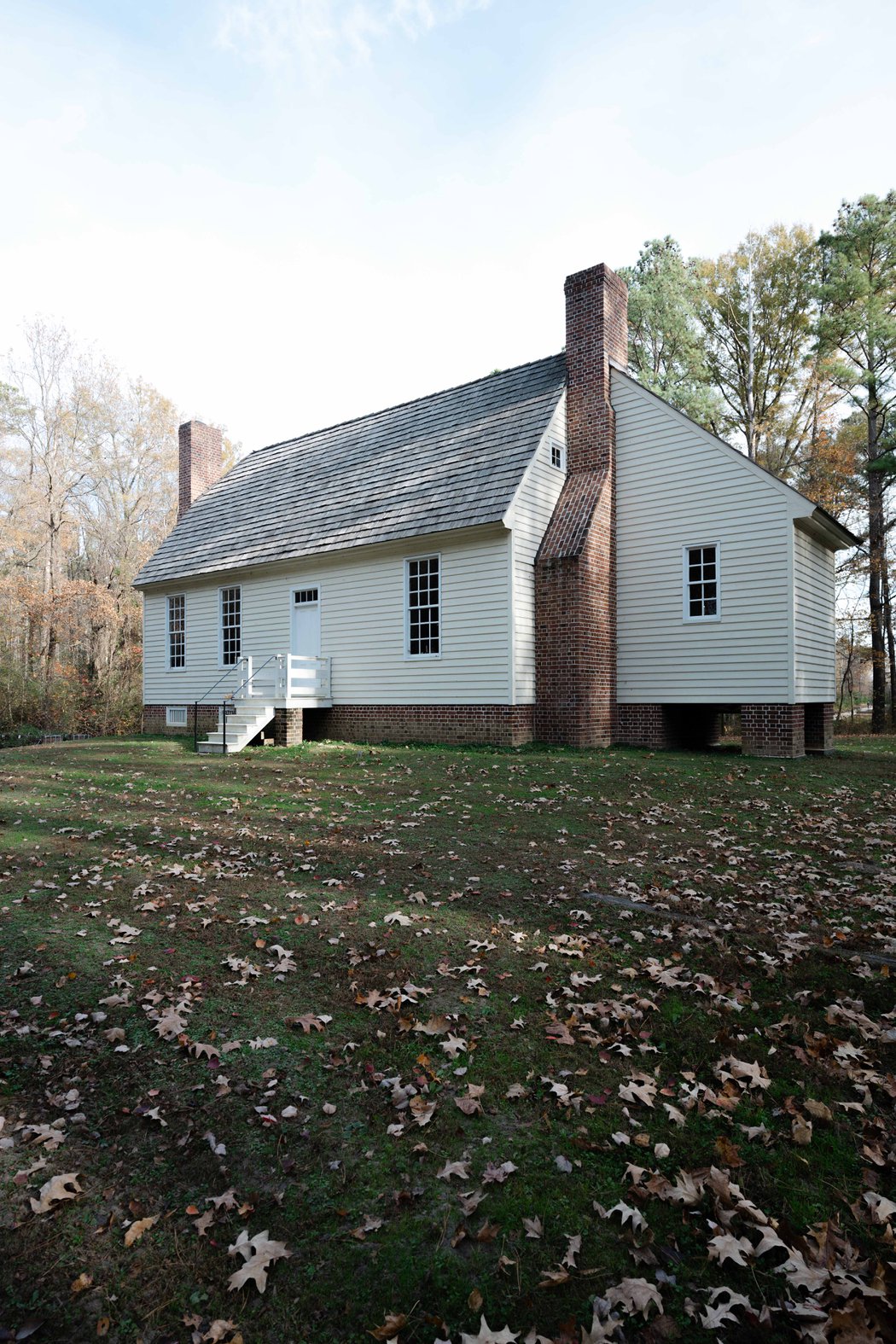Today we’re in the home stretch of our tour of historic Westmoreland County in Virginia’s Northern Neck. We were there last fall on assignment from Virginia Living magazine, and among the last three sites we visited were the reconstructed childhood home of James Monroe, the birthplace of George Washington – and the church where 20th-century author John Dos Passos was laid to rest:
James Monroe Birthplace Musem:
Fertile Ground
Even as a young man, James Monroe was a bright light.
He attended school at the home of Archibald Campbell, a Scottish immigrant and Episcopal minister at nearby St. Peter’s Church. James Madison and John Marshall were also Campbell’s students.
Monroe was fluent in Greek and Latin and excelled at mathematics. He kept the books for the family’s 500-acre farm, and by age 16, was studying law at William & Mary.
He left school to fight in the Revolution. He would cross the Delaware River with Washington for the Battle of Trenton. Wounded severely, he later took part in the battles of Brandywine and Germantown—and survived the 1777 winter at Valley Forge. He rose to the rank of major.
By 1780, he’d resigned his commission and was studying law under Virginia Governor Thomas Jefferson. The same year, he advertised his 1752 home and property for sale in the Virginia Gazette, with a drawing attributed to Henry Latrobe, architect of the U.S. Capitol. The property sold three years later.
Monroe was elected to the House of Delegates in 1782, admitted to the bar in 1783, and served in the Continental Congress from 1783 to 1786. He was elected a U.S. senator in 1790, governor of Virginia in 1799 and 1811, and fifth president of the U.S. in 1817 and 1820. He introduced the Monroe Doctrine in 1823, naming the U.S. the dominant power in the Western Hemisphere and warning off any further colonization by Europe.
After he died on July 4, 1831, his birthplace was dismantled. Not until his great-great-grandson organized a family foundation in 1927 was any thought given to rebuilding it. The foundation was incorporated in 1947, and fundraising efforts began in earnest in the late ’80s.
By 2021, the home and landscape were rebuilt and dedicated, at a cost of about $2 million.
A quarter-mile path to Monroe’s Creek is laid today in composite stone mingled with oyster shells. Quotes from Monroe are etched in granite pavers every 10 feet. One is from his 1817 inaugural address:
It is only when the people become ignorant and corrupt, when they degenerate into a populace, that they are incapable of exercising their sovereignty.
More than 200 years later, James Monroe still lights the way.
George Washington Birthplace National Monument:
Fact & Fiction
Everything about the George Washington Birthplace National Monument on Pope’s Creek is a little confusing.
Except that Washington definitely was born there. The National Park Service, steward of the 551-acre park on site, confirms the fact—and that he would live there for four years.
However, exactly where there he was born is uncertain. And what happened to his original home is as much a mystery as its location. Oral history says the home burned on Christmas Day, 1779, but the Park Service lacks evidence to back that up.
Now a granite obelisk, almost one-tenth the scale of the Washington Monument, rises at the entrance to the site. In 1896, it was placed on a spot believed to be Washington’s birthplace, but moved later to make way for a different memorial.
In 1932, for the 200th anniversary of Washington’s birth, architect Edward Donn Jr. opened the doors to a Colonial Revival residence there. Since no records of the birth house existed, Donn’s design was influenced by the 1930s architectural style du jour. Interestingly, his house/museum bears a striking resemblance to Twiford, the childhood home of the then-president of the Wakefield National Memorial Association, the group behind the commemoration. Its president, Josephine Wheelwright Rust, was a prominent socialite and descendant of the Washington family.
Historical documents help, sort of. In 1726, Augustine Washington, George’s father, submitted to Westmoreland County a page from his account book that documents a payment in tobacco for “finishing” a home on land he’d bought in 1718. It’s unclear, though, if “finishing” described work on an existing house or a new one.
Still, this site remains significant: First, it’s where seven generations of the Washington family lived. Second, it’s where the nation’s premier founding father was born. And third, it’s where the Park Service pursues its research to preserve and explore its legacy.
The year 2032 will mark the tricentennial of Washington’s birthday, surely with celebrations on site.
But more monuments?
Probably not. There’s still confusion to clear up.
Yeocomico Church:
Vessel of Virginia History
Yeocomico Church is a chapel with a past.
It started out humbly enough in 1655, oak-timbered and clapboard-clad. Once termites had their way with its wood, parishioners sought a more permanent fix. The vestry’s instructions to hired workers from England, sans blueprints, were straightforward: “Build us a church as you remember from your early years.”
By 1706, their new church, made of brick—fired on site and laid in both Flemish and English bond—was open for worship. It retained a one-of-a-kind feature from the original: a wicket door within a door. The smaller one, rather than the larger, can be opened and closed to keep warmth inside during winter, and hold off heat in the summer. It’s said to be the only functioning door of its type remaining in the nation.
Inside, a polished white and gray-streaked marble baptismal font also dates from the original church. It’s said to have held the holy water that baptized both George Washington and Richard Henry Lee on a spring Saturday in 1732 .
Some years back, the church identified about 100 skeletal remains from the 18th century, buried with long-gone wooden markers in the surrounding cemetery. Their identities are unknown today, except for Daniel McCarty, speaker of the House of Burgesses in the 1720s.
In 1970, American author John Dos Passos—a Hemingway contemporary and author of the U.S.A. trilogy—was buried there. For his last 25 years, he’d lived at nearby Spence’s Point on the Potomac River.
That’s because he knew God’s country when he saw it.
For more, go here.




